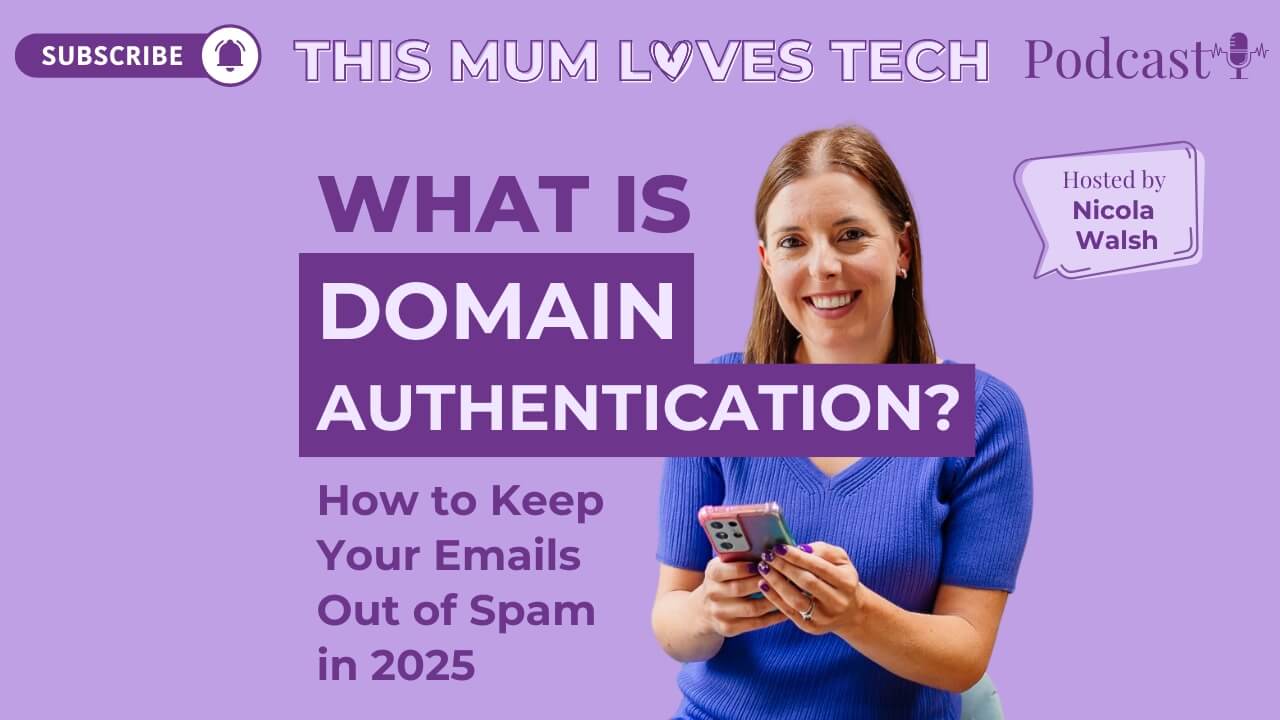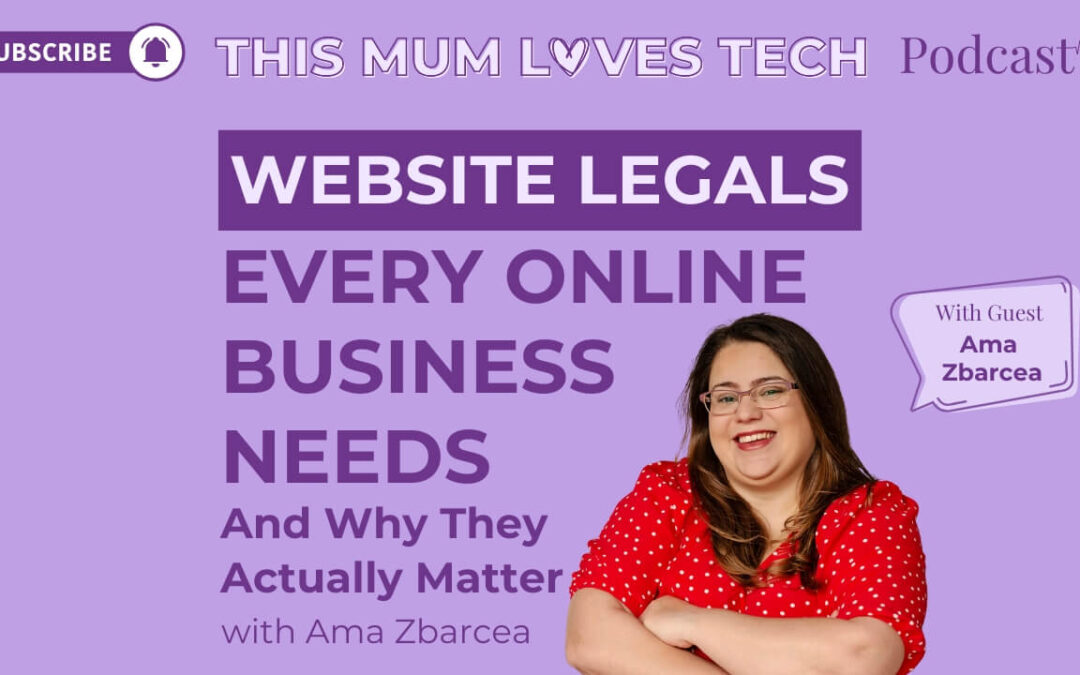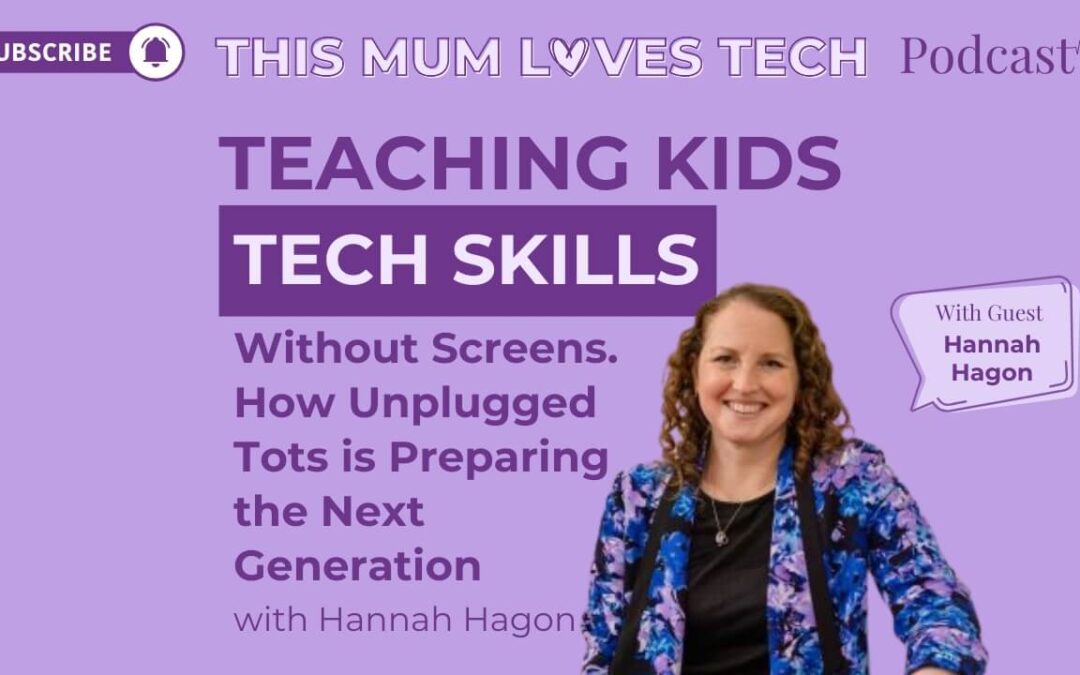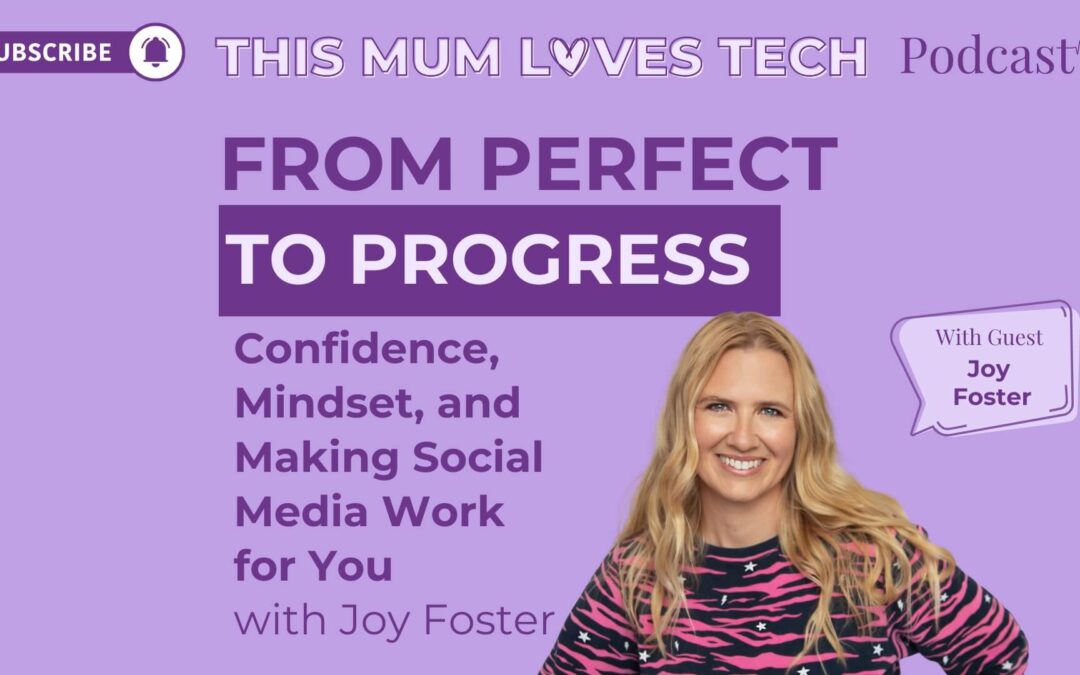Sending emails, whether from your inbox or through an email marketing platform, is a powerful tool for online business owners. But only if your emails are landing in inboxes, not spam folders.
In this week’s episode of This Mum Loves Tech, I break down everything online business owners need to know about domain authentication, including the newest rules from Microsoft.
Whether you’re just getting started with your professional inbox or you’ve been using email marketing for a while, this episode gives you a clear, jargon-free explanation of SPF, DKIM, and DMARC and why they matter more than ever in 2025.
Why Domain Authentication Matters
Contacting people via email has become a staple of 21st-century life, with billions of emails sent every day. Becuase of this, the big email companies such as Google, Yahoo and now Microsoft have introduced stricter spam filtering over the last couple of years.
And while this is great for us as email consumers, leading to fewer spam emails in our inbox, it now means there is more involved in sending emails as online business owners. And if we want to ensure that our carefully created emails actually land in the inbox as they are supposed to then this is the episode for you.
What Is Domain Authentication (in Simple Terms)?
Think of domain authentication as showing your ID before entering a club. It proves to your subscribers’ inboxes that you’re the real sender of the emails you’re sending.
You’ll need to add three key records to your domain:
- SPF (Sender Policy Framework): Proves your email marketing platform is allowed to send emails on your behalf.
- DKIM (DomainKeys Identified Mail): Adds a secure signature to your email so inboxes know it hasn’t been tampered with.
- DMARC (Domain-based Message Authentication, Reporting & Conformance): Tells inboxes what to do if your email fails the SPF and DKIM checks.
Once you’ve added these records, you’re telling inboxes: “Yes, this is really me, and I’ve done things properly.”
What You Need to Get Started
To set this up, here’s what you need:
- A domain name – like yourbusiness.co.uk
- A professional email address – e.g. hello@yourbusiness.co.uk (not Gmail or Hotmail)
- An email marketing platform – My recommendation when you’re starting your email list is MailerLite, which is free for your first 1,000 subscribers.
If you’re not sure how to get started, my FREE Email Marketing Made Easy guide walks you through these 3 steps in more detail. Sign up for the guide here 👉 Email Made Easy – Your 3-Step Start-Up Guide
What’s New with Microsoft (May 2025)
Up until now, these rules mainly affected Gmail and Yahoo users. But on 5th May 2025, Microsoft joined in. If your subscribers use Hotmail, Outlook, or Microsoft 365, your emails now need to meet the same standards.
And Microsoft has added one new rule:
Your return address must match your sending address.
That means no more “no-reply@” email addresses. Your emails need to come from a real address that people can reply to.
If you’re using MailerLite or similar, you’re probably already fine, most email marketing systems usually set these addresses to match by default. But it’s always worth double-checking!
Should You Still Bother If You’re Not Sending 5,000 Emails a Day?
Technically, some of these rules (like adding a DMARC record) are aimed at businesses sending over 5,000 emails a day.
But I’ve seen it with clients’ emails landing in the spam who didn’t have their domain authenticated (before working together), who were sending much fewer emails so it’s one of those things thats better to be safe than sorry.
So don’t wait until your list grows and then you need it which means people stop receiving your emails.
Get set up once, and then you can forget about it, safe in the knowledge your emails are actually reaching your audience.
Bonus Tip: Stop Using info@ Email Addresses
This is something I discovered recently that info@ is one of the most common aliases used by spammers so some inboxes are now starting to flag it. Even if you have al the authentication in place.
I know becuase it happened to me recently.
So I’ve now changed the alias for my email marketing to be nicola@ and since then no more reports of landing in that spam folder.
If you use Google Workspace, you can set up multiple aliases that all go into the same inbox, which makes this super easy to switch.
Keep Your Emails Out of Spam in 2025
Getting your domain authentication sorted might sound techy, but it’s a one-time setup that protects your business and improves your deliverability.
If you need support with your domain authentication, my Spam to Sales training takes you step by step through the setup process.
It’s based on MailerLite and Google Workspace but is helpful to show you the steps you need to take, whatever platforms you’re using.
My Spam to Sales training is currently part of the Sustainable Business Growth Bundle. A collection of 14+ practical trainings from real business owners (like me!) who are all about helping you grow your business with more calm, clarity, and confidence. Find out more about the bundle here 👉 Sustainable Business Growth Bundle




